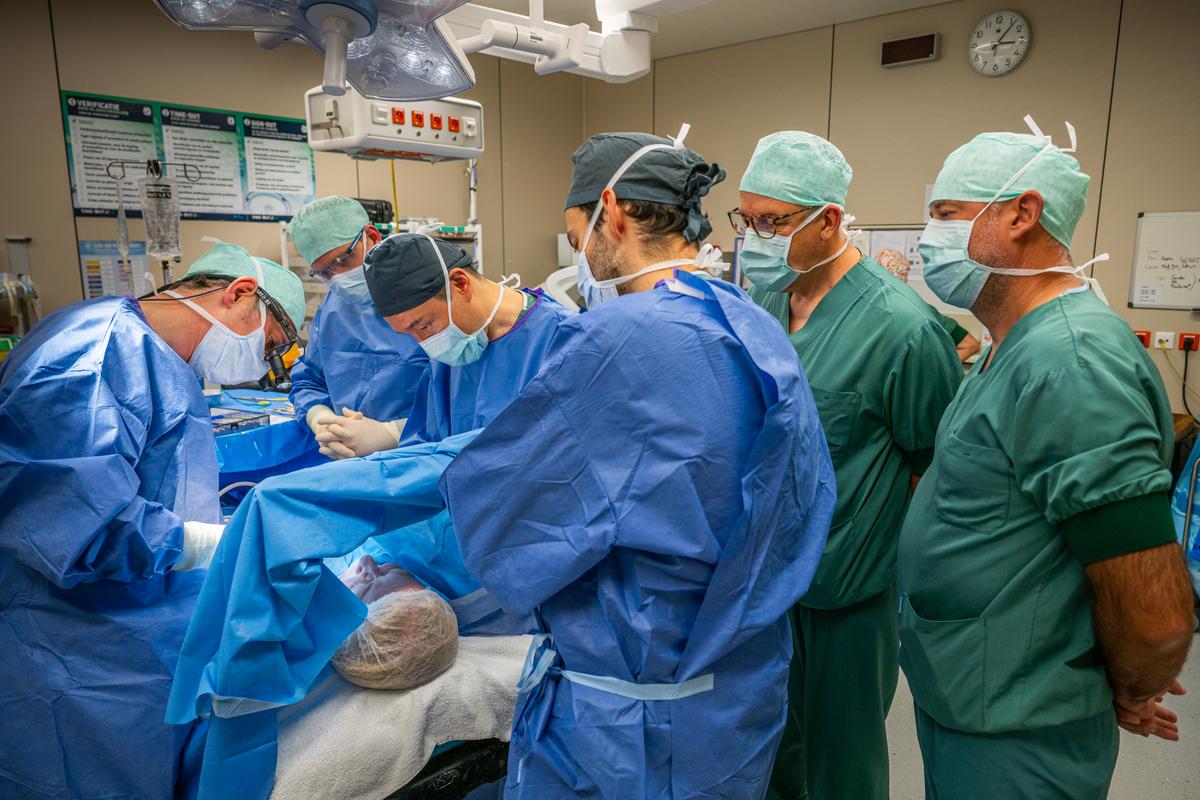Hoarseness caused by vocal cord paralysis
Damage to a vocal cord nerve can cause one of the vocal cords to stop working, preventing the vocal cords from closing properly. This can cause hoarseness and swallowing or breathing problems. The nerve can be damaged by surgery in the chest cavity or neck, but sometimes the cause of the vocal cord problems is unknown.
To restore the voice, the paralysed vocal cord is moved closer to the centre so that the vocal cords make contact again when speaking. This can be done in various ways.
- One option is an injection into the immobile vocal cord, which thickens it and allows the vocal cords to close more effectively when speaking. This is a simple procedure, but the effect is temporary.
- A second option is laryngeal reinnervation, an operation in which the damaged or non-functioning vocal cord nerve in the throat is connected to a nerve that is still functioning, so that the paralysed vocal cord receives nerve impulses again. This technique is only used in people under the age of 70. This is because nerve repair is more successful at a younger age and in patients who have not yet undergone radiation therapy to the head and neck area.
- Since a large proportion of people with vocal cord paralysis are over 70 years of age, an implant placed in the larynx is an excellent third option. The preformed silicone implants used to date usually produce good results. However, the disadvantage of this option is that the implant cannot be adjusted afterwards. If the vocal cord weakens and thins further over time, a new operation may be necessary to insert a larger implant.
Adjustable balloon
Doctors at UZ Leuven are therefore now using a new type of implant. Thanks to a special balloon, the implant, called “APrevent® VOIS”, can be easily adjusted if the voice changes afterwards, for example because the vocal cord muscle becomes thinner.
The implant can remain in place for life and no further surgery is required to make voice corrections. Prof. dr. Jeroen Meulemans
Prof. dr. Jeroen Meulemans
The APrevent® VOIS implant was developed by dr. Guan-Min Ho, CEO of APrevent. He was also present during the operation to provide support. The procedure went smoothly and the patient is doing well. The procedure was performed for the first time in Belgium in June by CHU UCL Namur. Currently, the implant is not yet reimbursed in Belgium.
